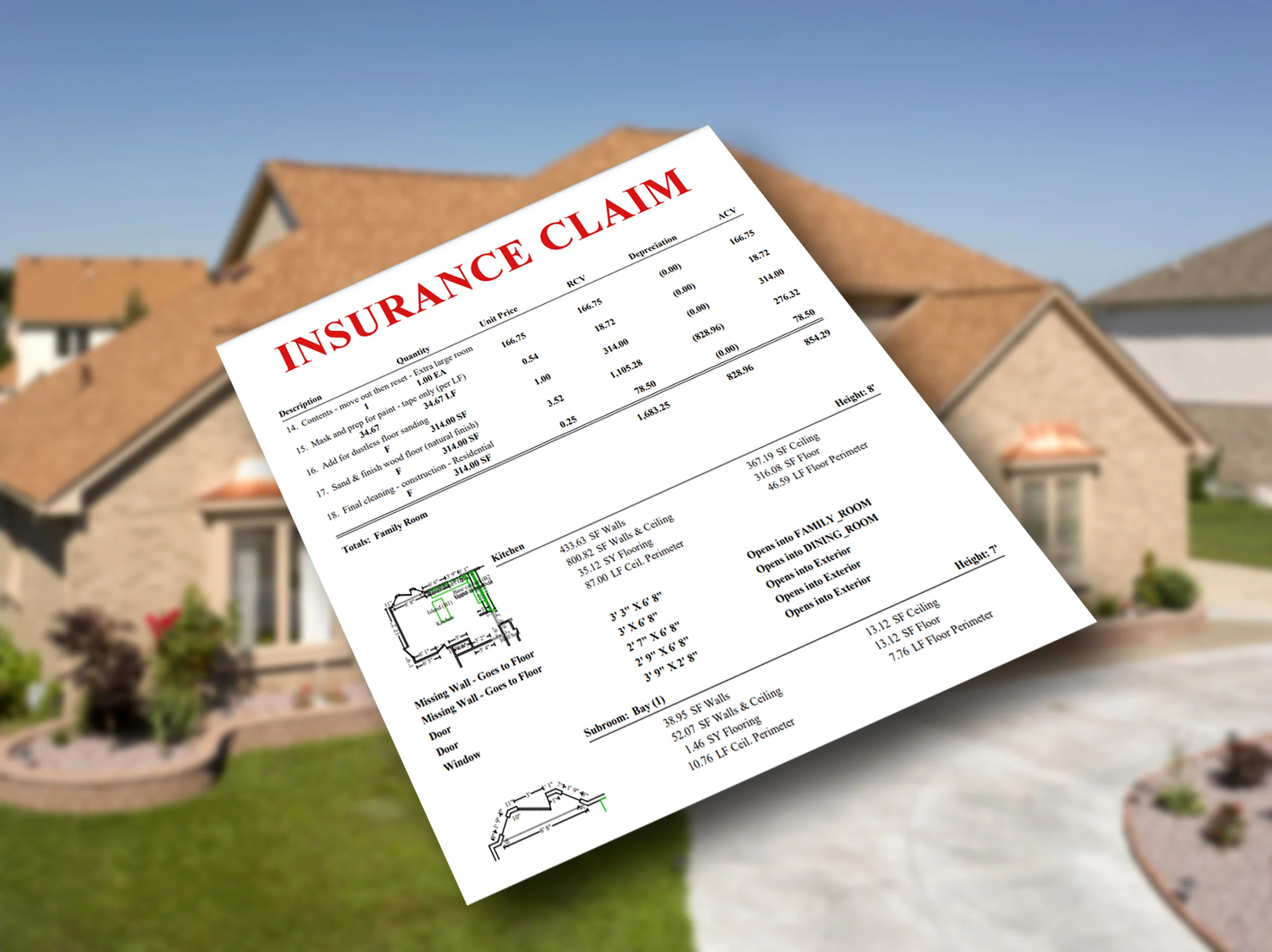When homeowners file an insurance claim for property damage, understanding the intricacies of their policy, especially regarding depreciation, becomes crucial. Depreciation plays a pivotal role in how insurance companies calculate compensation. This post delves into why insurance companies use depreciation, which policies apply this concept, and the process involving the initial and final insurance checks.
Why Insurance Companies Depreciate Claims
Depreciation is the decrease in value of an item over time due to use, wear and tear, or obsolescence. Insurance companies apply depreciation to reflect the item’s current value rather than its replacement cost or original price. This practice ensures that the compensation awarded aligns with the actual cash value (ACV) of the damaged item at the time of the claim, not the cost to buy a new replacement.
The rationale behind this approach is rooted in the principle of indemnity, which aims to restore the insured to their financial position prior to the loss, without allowing for profit from a claim. Depreciation prevents overpayment and discourages policyholders from benefiting financially from a loss.
Policies Involving Depreciation
Two main types of homeowner’s insurance policies consider depreciation differently: Actual Cash Value (ACV) policies and Replacement Cost Value (RCV) policies.
- ACV Policies: These policies factor in depreciation when determining the payout amount. The settlement reflects the item’s depreciated value, meaning homeowners may not receive enough compensation to purchase brand-new replacements.
- RCV Policies: Unlike ACV, RCV policies provide compensation to replace the damaged items with new ones, regardless of the original item’s age or condition. However, depreciation still plays a role, as insurance companies typically release payments in two stages, incorporating depreciation in the initial payment.
The Insurance Payment Process
Initial Check: The ACV Payment
Once a claim is filed and approved, insurers first issue a payment based on the Actual Cash Value of the damaged property. This amount is calculated by estimating the replacement cost and then subtracting depreciation. This initial payment allows policyholders to begin repairs or replacements but may not cover the total cost.
Recoverable Depreciation and the Final Check
For policies that include recoverable depreciation (most RCV policies), policyholders have the opportunity to claim the withheld depreciation amount. This process typically involves:
- Completing Repairs or Replacement: The homeowner must first use the ACV payment to start the necessary repairs or replacements.
- Submitting Receipts: After the work is completed, the policyholder submits receipts to the insurance company, proving that the repairs or replacements were made and how much they cost.
- Releasing the Final Check: The insurer reviews the submitted documentation and, if everything is in order, issues a second check covering the recoverable depreciation. This payment aims to cover the gap between the ACV payment and the total cost of the repairs or replacement.
Navigating the Process
Navigating the depreciation and claims process can be complex. Here are a few tips to ensure you maximize your settlement:
- Understand Your Policy: Know whether your policy offers ACV or RCV coverage and understand the implications for your claims.
- Document Everything: Keep detailed records of the damage and repairs, including photos and receipts.
- Meet Deadlines: Be aware of any time limits for completing repairs and submitting claims for recoverable depreciation.
- Communicate with Your Insurer: Stay in touch with your insurance adjuster throughout the process to ensure you meet all requirements for recovering depreciation.
Conclusion
Understanding how depreciation affects your insurance claim and payment process is essential for homeowners. By familiarizing yourself with the specifics of your policy and following the outlined steps, you can navigate the claims process more effectively and ensure you receive the full benefit your policy offers. Remember, the goal of insurance is to make you whole again after a loss, not to profit from the claim. Properly managing the depreciation aspect of your claim is key to achieving this objective.



Comments are closed